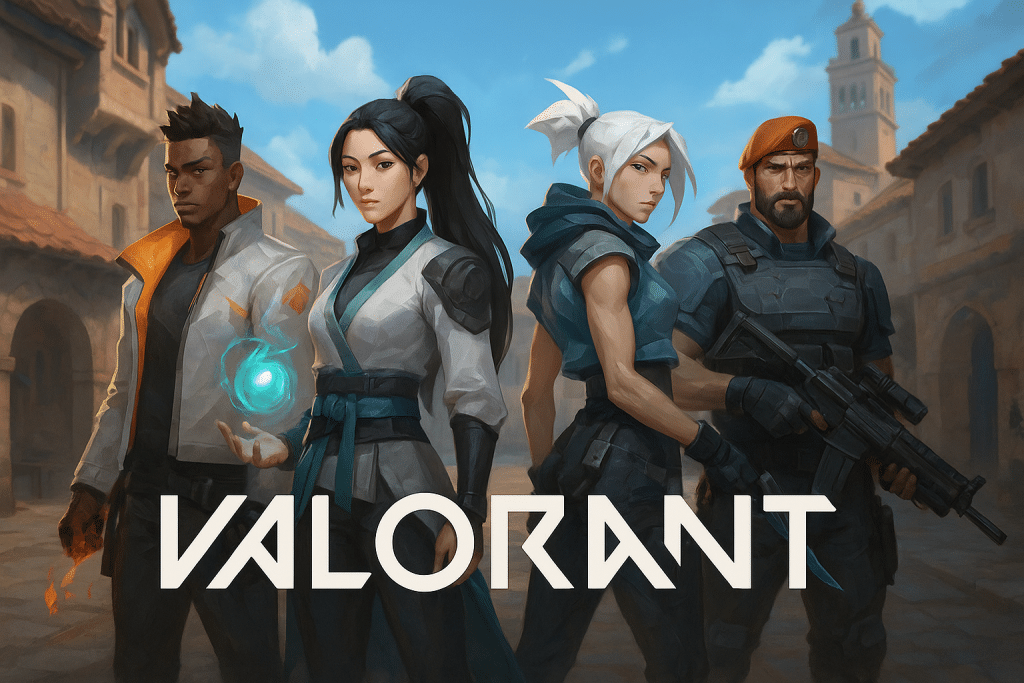More than 5 years after its release in 2020, Valorant has established itself as one of the most popular tactical shooters worldwide, attracting millions of active players each month. Its precise gunplay, hero-based agent abilities, and thriving competitive scene keep players engaged season after season, while the COVID-19 pandemic and global lockdowns helped accelerate its early growth by bringing more players online. Compared to games like Counter-Strike: Global Offensive (CS:GO), Valorant’s hero-based gameplay, regular updates, and dynamic meta provide a unique edge and continually refresh the player experience.
From Launch in 2020 to Today
Riot Games officially released Valorant on June 2, 2020, after teasing it under the codename Project A in late 2019. In just five years, the title has grown into a global phenomenon: millions of players, a rapidly developing esports ecosystem, and an expansion to consoles in 2024.
The game’s appeal lies in precise gunplay combined with distinct agent abilities and deep team strategy. Every match asks players to adapt, communicate, and coordinate — a design that delivers both short-term excitement and long-term progression.
The Challenge of Climbing the Ranked Ladder
Climbing Valorant’s ranked ladder — from Iron to Radiant — requires mechanical skill, map awareness, consistent teamwork, and strong decision-making. Many players feel stuck juggling ranked games with work, study, or real-life commitments.
Players who want to improve more efficiently can use services like Valorant Boost, where professional boosters not only help them rank up faster but also share strategy tips, map insights, and positioning advice. This way, players climb quicker while gaining practical knowledge to improve long-term.
Key Factors Behind Valorant’s Ongoing Popularity
Constant Updates and New Agents
Riot Games regularly ships patches, introduces new agents, and tweaks maps and abilities. These updates change the meta and encourage experimentation, so each season feels fresh and invites new strategies.
Unique Gameplay Hybrid
Valorant blends classic FPS mechanics with hero-based ability play. Success depends on aim, but also on how teams use agents together. That hybrid appeals to both aim-focused players and those who enjoy strategic, ability-driven play.
A Thriving Esports Scene
A professional ecosystem — from regional leagues to international events — motivates players to level up. The Valorant Champions Tour (VCT) anchors that ecosystem and attracts large viewership, helping pro-level strategies trickle down to regular players. For more background on the official competitive circuit, see Valorant Champions Tour on Wikipedia.
In 2024, VCT events drew significant global audiences, showcasing high-level play and driving interest in competitive tactics among everyday players.
Accessibility and Global Reach
Valorant’s free-to-play model and modest hardware requirements make it widely available. The 2024 console release widened its reach further, bringing in gamers who prefer controllers over keyboard and mouse. This accessibility ensures a continuous influx of new players, maintaining competitive integrity and engagement across all ranks.
Why Valorant Keeps Players Engaged
Several built-in systems support long-term engagement:
- Replayability — different teammates and strategies make each match unique.
- Role Variety — specializing in a role yields measurable progression and mastery.
- Community & Collaboration — teamwork and communication foster active player communities.
- Reward Systems — ranked progression, seasonal rewards, and cosmetics are motivating.
Example of Player Success
A player who started in Silver in 2022 combined focused practice, duo-queue with more experienced friends, and strategy guides to reach Diamond within a year. This shows how practice plus targeted guidance can accelerate improvement while keeping the learning curve manageable.
Boosting and Improving Gameplay
Valorant’s competitive nature pushes players to constantly refine their skills. For those who want to grow faster, support services can provide structured guidance. Instead of just handing out higher ranks, ethical boosting and professional coaching focus on improving fundamentals: mastering agent synergy, map control, positioning, and smarter decision-making. The result is not just a temporary climb, but long-term competence that helps players perform better in every match.
Earning Opportunities from Valorant
Valorant’s popularity has created new professional opportunities. Many skilled players have become professional boosters, helping others climb the ranked ladder efficiently while earning income from their expertise.
Moreover, Riot Games’ official competitions — notably the Valorant Champions Tour — award cash prizes and salaries for top teams and players, making competitive play a viable career path for the best performers. Together, boosting services and official esports competitions show how Valorant can be both entertainment and a source of real-world earnings.
The Future of Valorant
Several trends point to ongoing popularity: steady content updates, a growing esports infrastructure, cross-platform expansion, and Riot’s emphasis on community features and seasonal content. Together, these factors suggest Valorant will remain a major player in the tactical-shooter space for years to come.
Conclusion
Five years after its 2020 launch, Valorant continues to thrive thanks to dynamic gameplay, strategic depth, and a robust esports scene. Players seeking to improve — whether through practice, coaching, or trusted support services — can still find meaningful ways to progress and enjoy the competitive experience.
